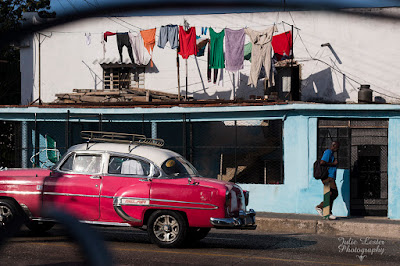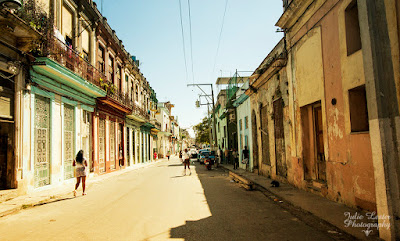Se Debe Ir Alli Para Conocer Alli: Cuba, 2017
During Spring Break, 2017, from March 5th until March 12th, I had the rare privilege of visiting Havana, Cuba. Through the International Studies program at Southwest Tennessee Community College and that of the University of Memphis, I accompanied my five students and a colleague to the little island in the Caribbean, where, depending where you look, time has virtually stopped. Only recently, in the last few years of Fidel Castro's reign, were educators, doctors, and politicians from the United States permitted to visit there. The island of Cuba is gradually opening itself up to commercial tourism with a wary eye.
Perhaps one of the most fascinating and memorable experiences I had on this week-long odyssey was my introduction to Santeria, Cuba's national religion. Santeria, like other syncretic religions (Obeah, Pokemania, Myal, and Vodu) synthesizes Catholic elements with those of primarily West African traditions. Also, like the other syncretic faiths we have discussed, the performance of music and the dances of Santeria convey a narrative concerning the way postcolonial culture has retained its origins in West African traditions through a Catholic guise, and attaining a means of militating against the forces of oppression.
The videos below offer insight into the colorful and lively performance of Santeria as well as an example of the nourishing processes it offers to its followers.
Known more familiarly to us as Esu-Elegbara, or Papa Legba. As he represents the "beginning and ending of life', Elegba is at times portrayed as a spirited child; at others he is portrayed as an elderly man. Here he is portrayed as a playful child--by a woman performer (1).
Oya: Owner of the Wind: Oya is the "fiercest" of the female santos and fights alongside Chango, the "Lord of Fire and Lightening," wielding a sword in each hand. She is said to bring change--whether wanted or not--into the lives of believers.
The clips that follow show two santeros (Olorichas)--or priests--conducting a blessing.
Perhaps one of the most fascinating and memorable experiences I had on this week-long odyssey was my introduction to Santeria, Cuba's national religion. Santeria, like other syncretic religions (Obeah, Pokemania, Myal, and Vodu) synthesizes Catholic elements with those of primarily West African traditions. Also, like the other syncretic faiths we have discussed, the performance of music and the dances of Santeria convey a narrative concerning the way postcolonial culture has retained its origins in West African traditions through a Catholic guise, and attaining a means of militating against the forces of oppression.
The videos below offer insight into the colorful and lively performance of Santeria as well as an example of the nourishing processes it offers to its followers.
Known more familiarly to us as Esu-Elegbara, or Papa Legba. As he represents the "beginning and ending of life', Elegba is at times portrayed as a spirited child; at others he is portrayed as an elderly man. Here he is portrayed as a playful child--by a woman performer (1).
Oya: Owner of the Wind: Oya is the "fiercest" of the female santos and fights alongside Chango, the "Lord of Fire and Lightening," wielding a sword in each hand. She is said to bring change--whether wanted or not--into the lives of believers.
Below, our guide, Elian, explains the order of gods, or Santeras, of Santeria that include the figures of Yemaya, Oya, Ochun, and Elegba.
The clips that follow show two santeros (Olorichas)--or priests--conducting a blessing.




























Comments
Post a Comment